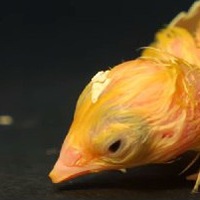
Как приспосабливаются живые организмы к свету,воде и температуре? с примерами
 0
0
 0
0
Ответы на вопрос
 Внимание! Ответы на вопросы дают живые люди. Они могут содержать ошибочную информацию, заблуждения, а также ответы могут быть сгенерированы нейросетями. Будьте внимательны. Если вы уверены, что ответ неверный, нажмите кнопку "Пожаловаться" под ответом.
Внимание! Ответы на вопросы дают живые люди. Они могут содержать ошибочную информацию, заблуждения, а также ответы могут быть сгенерированы нейросетями. Будьте внимательны. Если вы уверены, что ответ неверный, нажмите кнопку "Пожаловаться" под ответом.

Выпиши самое главное :)
В общем:
Приспособления организмов к среде носят название адаптации. Способность к адаптациям - одно из основных свойств жизни вообще, так как обеспечивает самую возможность ее существования, возможность организмов выживать и размножаться. Адаптации проявляются на разных уровнях: от биохимии клеток и поведения отдельных организмов до строения и функционирования сообществ и экологических систем. Адаптации возникают и изменяются в ходе эволюции видов.
Приспособления к температуре:
Растения в жарких пустынях, где дожди выпадают нечасто, приспособились накапливать воду и уменьшать ее испарение, Чтобы не замерзнуть зимой, осенью животные накапливают толстый слой жира, их мех становится более густым. Дело в том, что жир и мех плохо проводят тепло, которое вырабатывает организм, и таким образом препятствуют охлаждению внутренних органов.
Свету:
Одуванчик лекарственный . Орган растения, в котором под действием солнечного излучения образуются вещества, необходимые для жизни, — это лист. Растет одуванчик весной и летом. Осенью день укорачивается, солнечного света становится недостаточно, чтобы растение могло вырабатывать органические вещества. Листья одуванчика изменяют цвет и отмирают. Но погибло ли растение? Весной на том же месте появляются молодые листья. Следовательно, одуванчик не погиб, а лишь «притаился» на время — под землей остался живой корень, который весной даст новые листочки и цветы.
Воде:
Рыбы и раки дышат растворённым в воде кислородом с помощью жабр.
Объяснение:
 0
0
 0
0

Adaptation of Living Organisms to Light, Water, and Temperature
Living organisms have evolved various adaptations to survive and thrive in different environmental conditions, including light, water, and temperature. These adaptations allow organisms to optimize their physiological processes, maintain homeostasis, and ensure their survival. Let's explore how organisms adapt to these factors, along with some examples.
Adaptation to Light
Light is a crucial environmental factor that affects the growth, development, and behavior of living organisms. Different organisms have developed various adaptations to optimize their interaction with light. Here are a few examples:1. Phototropism: Plants exhibit phototropism, which is the growth or movement of an organism in response to light. For example, sunflowers track the movement of the sun throughout the day, ensuring maximum exposure to sunlight for photosynthesis.
2. Camouflage: Many animals have developed camouflage mechanisms to blend in with their surroundings and avoid predation. For instance, the chameleon can change its skin color to match the environment, providing protection from predators.
3. Bioluminescence: Certain organisms, such as fireflies and deep-sea creatures, produce light through bioluminescence. This adaptation helps them attract mates, communicate, or lure prey in the dark.
Adaptation to Water
Water is essential for the survival of most organisms, and they have evolved various adaptations to live in aquatic environments or cope with water scarcity. Here are a few examples:1. Gills: Aquatic organisms, such as fish, have gills that allow them to extract oxygen from water. Gills provide a large surface area for efficient gas exchange.
2. Desert Adaptations: Desert plants and animals have developed adaptations to conserve water. For example, cacti have thick, waxy stems to reduce water loss through evaporation, and camels can survive for long periods without drinking water due to their efficient water conservation mechanisms.
3. Aquatic Locomotion: Aquatic animals, like dolphins and fish, have streamlined bodies and fins or flippers that enable efficient movement through water.
Adaptation to Temperature
Temperature is a critical factor that affects the metabolic processes and survival of organisms. Organisms have evolved various adaptations to cope with extreme temperatures. Here are a few examples:1. Hibernation: Some animals, such as bears and ground squirrels, enter a state of hibernation during cold winters. They lower their metabolic rate and conserve energy until the temperature becomes favorable for their survival.
2. Migration: Many bird species migrate to warmer regions during winter to avoid the extreme cold. This adaptation allows them to find suitable temperatures and abundant food resources.
3. Thermoregulation: Organisms have developed mechanisms to regulate their body temperature. For example, mammals have fur or fat layers that provide insulation, while birds fluff their feathers to trap air and maintain warmth.
In conclusion, living organisms have evolved a wide range of adaptations to cope with environmental factors such as light, water, and temperature. These adaptations enable organisms to survive, reproduce, and thrive in diverse habitats.
 0
0
 0
0
Похожие вопросы
Топ вопросов за вчера в категории Биология
Последние заданные вопросы в категории Биология
-
Математика
-
Литература
-
Алгебра
-
Русский язык
-
Геометрия
-
Английский язык
-
Химия
-
Физика
-
Биология
-
Другие предметы
-
История
-
Обществознание
-
Окружающий мир
-
География
-
Українська мова
-
Информатика
-
Українська література
-
Қазақ тiлi
-
Экономика
-
Музыка
-
Право
-
Беларуская мова
-
Французский язык
-
Немецкий язык
-
МХК
-
ОБЖ
-
Психология
-
Физкультура и спорт
-
Астрономия
-
Кыргыз тили
-
Оʻzbek tili


























